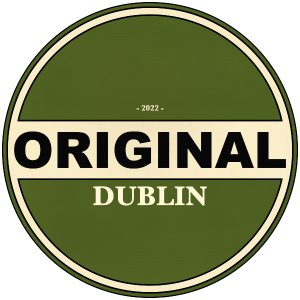Dublin’s Viking Origins: From Raids to Roots
The Vikings’ Arrival in Ireland
At first, the Viking attacks were sporadic and seasonal. The Norsemen arrived in the summer to raid and pillage, retreating to Scandinavia for the winter. However, everything changed in 841, when they decided to stay.
The Birth of Viking Dublin
In 841, a Viking fleet rounded Howth Head and sailed up the River Liffey. Reaching the area we now know as Dublin, they hauled their longships ashore and established a long fort (or winter camp). This marked the first time Vikings spent winter in Ireland.
Two settlements soon emerged:
Ath Cliath, located further west along the River Liffey near the modern-day Father Matthew Bridge.
Dubh Linn, the area around modern Dublin Castle, which would become central to the city’s history.
Dubh Linn, meaning “black pool” in Irish (from dubh for “black” and linn for “pool”), served as a natural harbour for Viking longships. Interestingly, the Irish alphabet doesn’t include the letter V. In Old Irish, the V sound was created by placing two dots above a B, so Dubh Linn was written as Dub̈ lin. For speakers of Old or Middle English, this would have been read simply as “Dublin,” giving rise to the modern name of the city.
Why Dublin Was Vital to the Vikings
The location of Dubh Linn was strategic for the Vikings. The natural harbours provided safe docking for their longships, while the rivers offered access for trade and raiding expeditions. Over time, the settlement grew into a bustling hub of commerce, blending Norse and Irish influences.
This era, known as the Viking Dublin era, left a lasting mark on the city. Remnants of Viking life can still be seen today in archaeological sites and museums, making Dublin a fascinating destination for history enthusiasts.
Walking Tours: Explore Dublin’s Viking Heritage
For those intrigued by this captivating history, our Dublin walking tours offer a unique perspective on the city’s Viking past. You will see:
- Dublin Castle, where Dubh Linn once held long boats and Viking hoards.
- Christchurch Cathedral founded by King Sitric in 1030
- Walk along the banks of the River Liffey.
- Hear about Viking archaeological finds at Wood Quay.
Conclusion
The Vikings’ arrival in Ireland in 795 marked the beginning of a transformative chapter in the island’s history. By 841, their decision to establish a winter camp at Dubh Linn laid the foundation for what would become modern Dublin.
Explore this rich history on a Dublin walking tour, where the echoes of the Viking Dublin era come alive. From Viking sites in Dublin to the story behind the city’s name, there’s so much to uncover about Dublin’s Viking heritage.


